Up Next

Until the last two laps of the 2020 British Grand Prix it seemed there was nothing much going on here, just a high-speed demonstration of Mercedes superiority, Lewis Hamilton seeing off a valiant challenge from Valtteri Bottas, with Max Verstappen’s Red Bull hanging on somewhere in the distance, the rest nowhere.
But beneath the surface – and the surfaces of the left-front Pirellis – it was all building to an incredible late jeopardy.
In hindsight, there were hints of trouble. At McLaren on the 34th of the 52 laps the team had asked sixth-placed Lando Norris if he could squeeze up a bit closer behind team-mate Carlos Sainz Jr so as to keep out of the advancing Daniel Ricciardo’s reach.
“I don’t want to destroy my left-front,” Norris had responded. “If I push up to him, I’ll trash it. You need to tell Carlos to hurry up.”
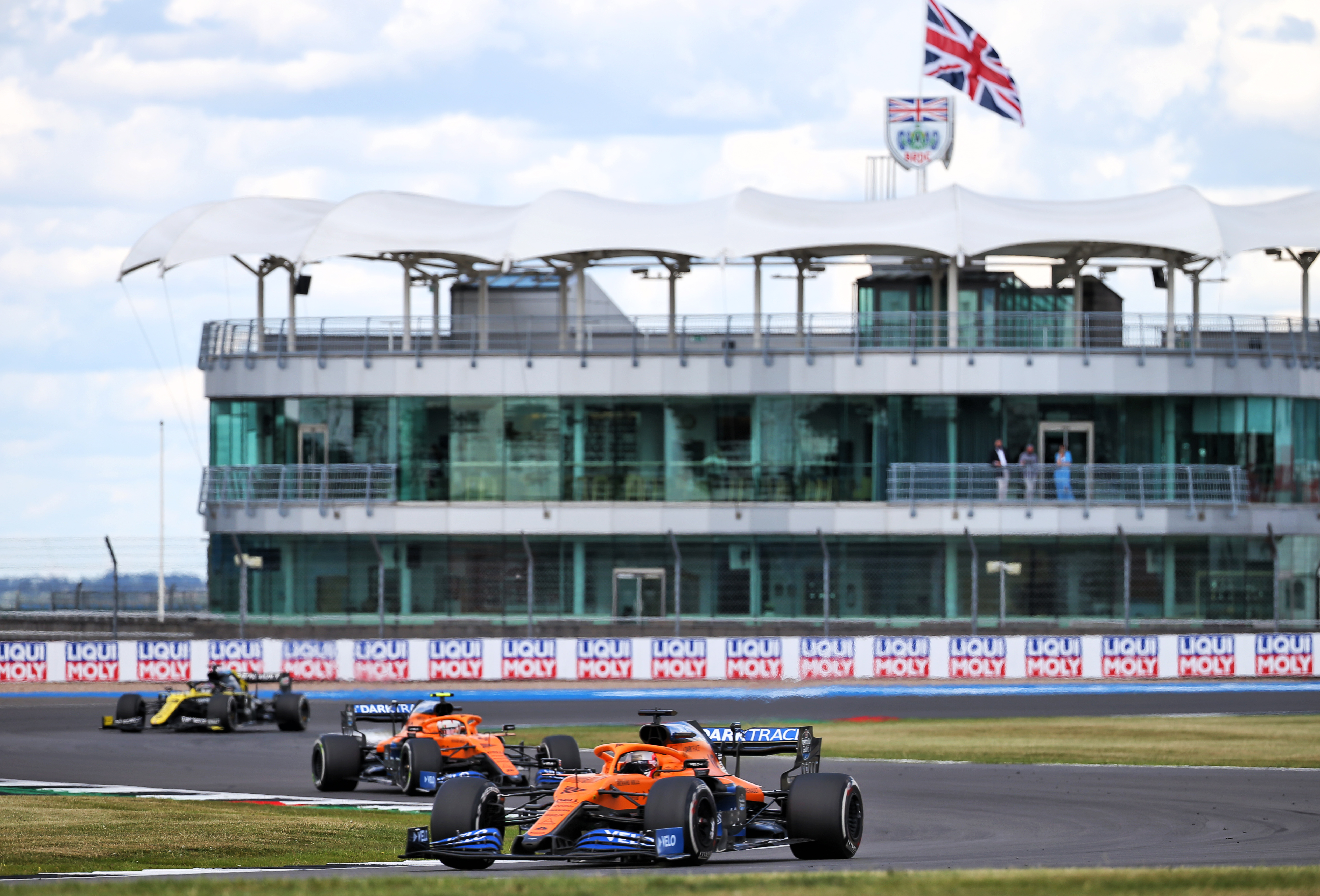
In other words, they both needed to pull away in synch, maintaining the gap between them so Norris didn’t run in the dirty air and stress that left-front even more.
“No, I can’t,” responded Sainz. “I have a vibration on my left-front.”
This was with 18 laps still to go. At the time of writing it still hadn’t been ascertained whether the root of the problem was a structural one or debris damage.
The wear rate of the tyres was higher than expected and, with almost no tread left, the tyres are incredibly prone to debris damage
Had the carcass been simply overcome by the relentless high, long-duration loads imposed on them around this most demanding of circuits on cars with more downforce than ever?
Make no mistake, these cars generate simply enormous downforce and, since the hybrid era began, are heavy. Despite their enormous torque and in excess of 1000bhp, since 2017 they have actually been underpowered for the grip they have, especially around the high-speed curves of this place, where Abbey, Copse, Maggots and Stowe aren’t even corners, merely kinks.
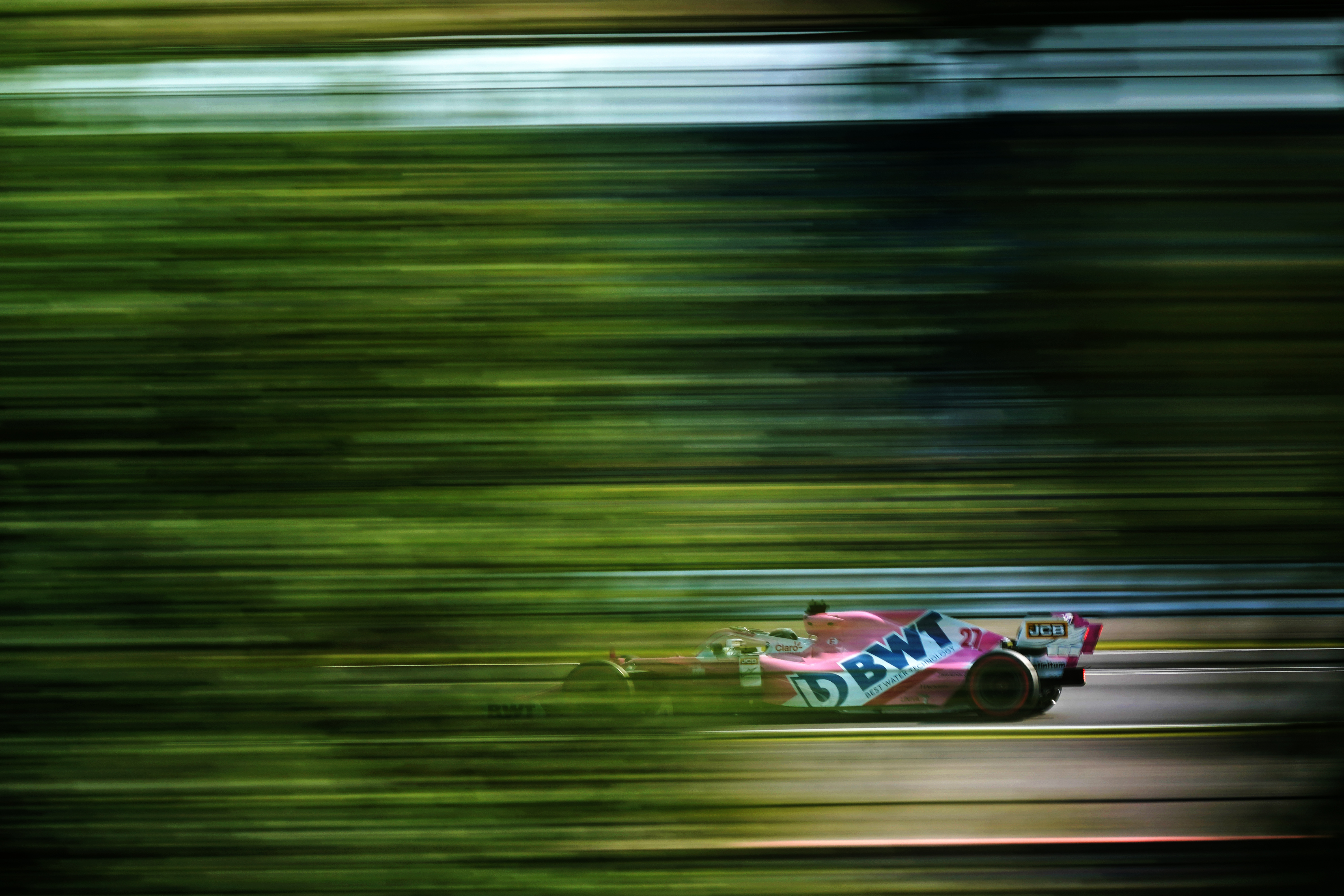
“You approach Copse flat in seventh,” said one driver, “with the up-change lights flashing. But you don’t change up, you just stay flat and turn in.
“Then you hear the engine revs being dragged down by the cornering force and the up-change lights go out. The engine really labours.
“It’s actually easier than it should be. It’s a bit like driving an F3 car. Just way more grip than power.”
But there was probably debris on the track too. Alex Albon and Kevin Magnussen had clashed on the first lap. Kimi Raikkonen left part of his front wing endplate over a kerb – and Daniil Kvyat had the mother and father of shunts at Maggots.
In fact, it was this lap 12 accident that put into place the events that led to everyone’s second set of tyres being asked to do such a long stint in this one-stop race.
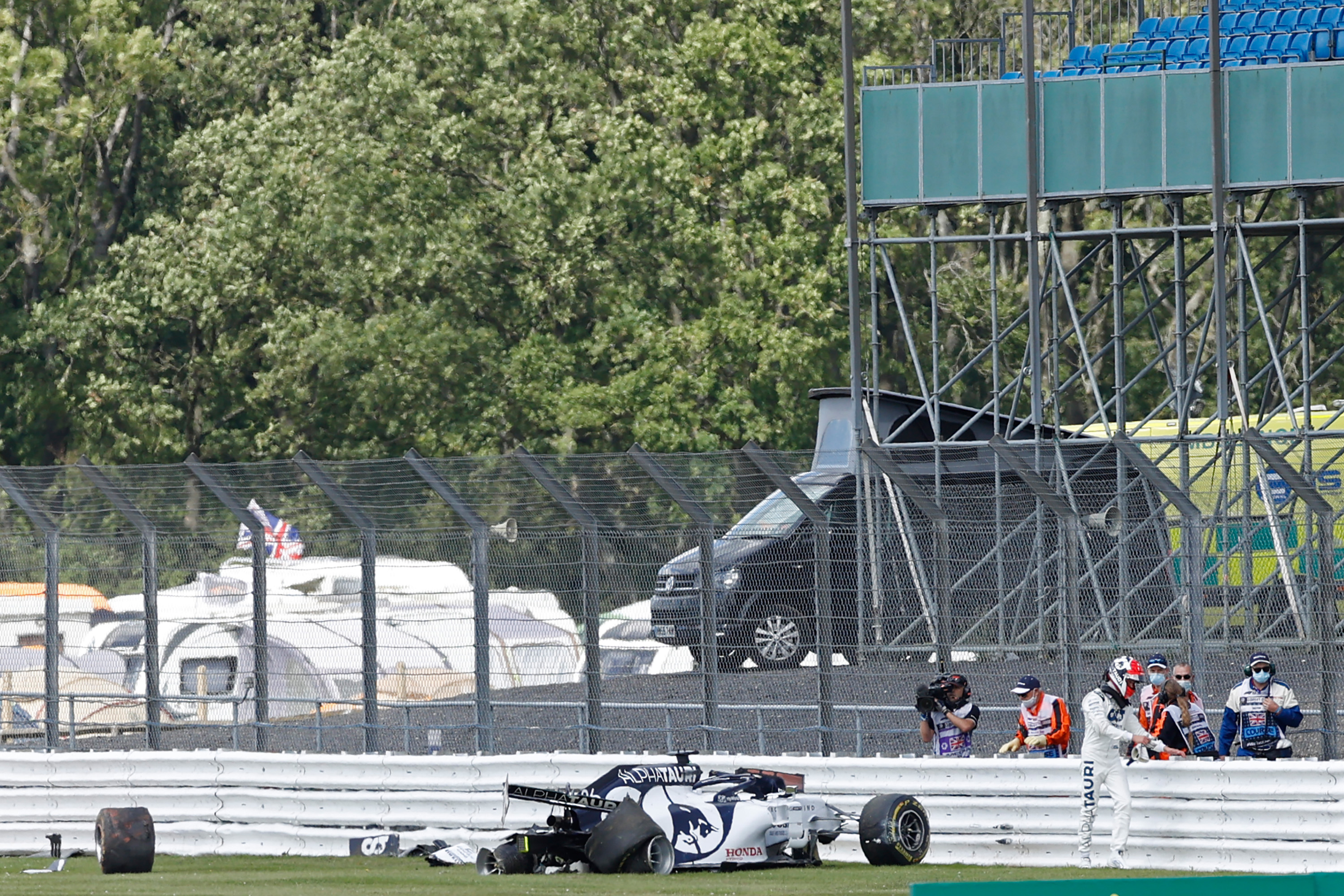
Forty laps on the hard compound was well within what the teams had expected the Pirelli hard they all fitted to be able to do. But maybe the data was wrong. Maybe the increase in performance since last year tipped the left-front of the highest-downforce cars over the edge.
Here’s the best-fit working theory at the time of writing. Raikkonen lost his endplate over the Village Corner kerb on the 47th lap of his race, leaving an arc of debris.
The wear rate of the tyres was higher than expected and, with almost no tread left, the tyres are incredibly prone to debris damage.
We know the wear rate was higher than expected – because the front-left medium tyre of Romain Grosjean, which did the first 36 laps of the race, died abruptly, no tread left. 100% wear after 36 laps was way more than would have been predicted, even for the medium.
Besides, the left-front that came off Verstappen’s car a couple of laps from the end, “had about 50 little cuts in it,” according to Christian Horner, “so clearly it had been through debris.”
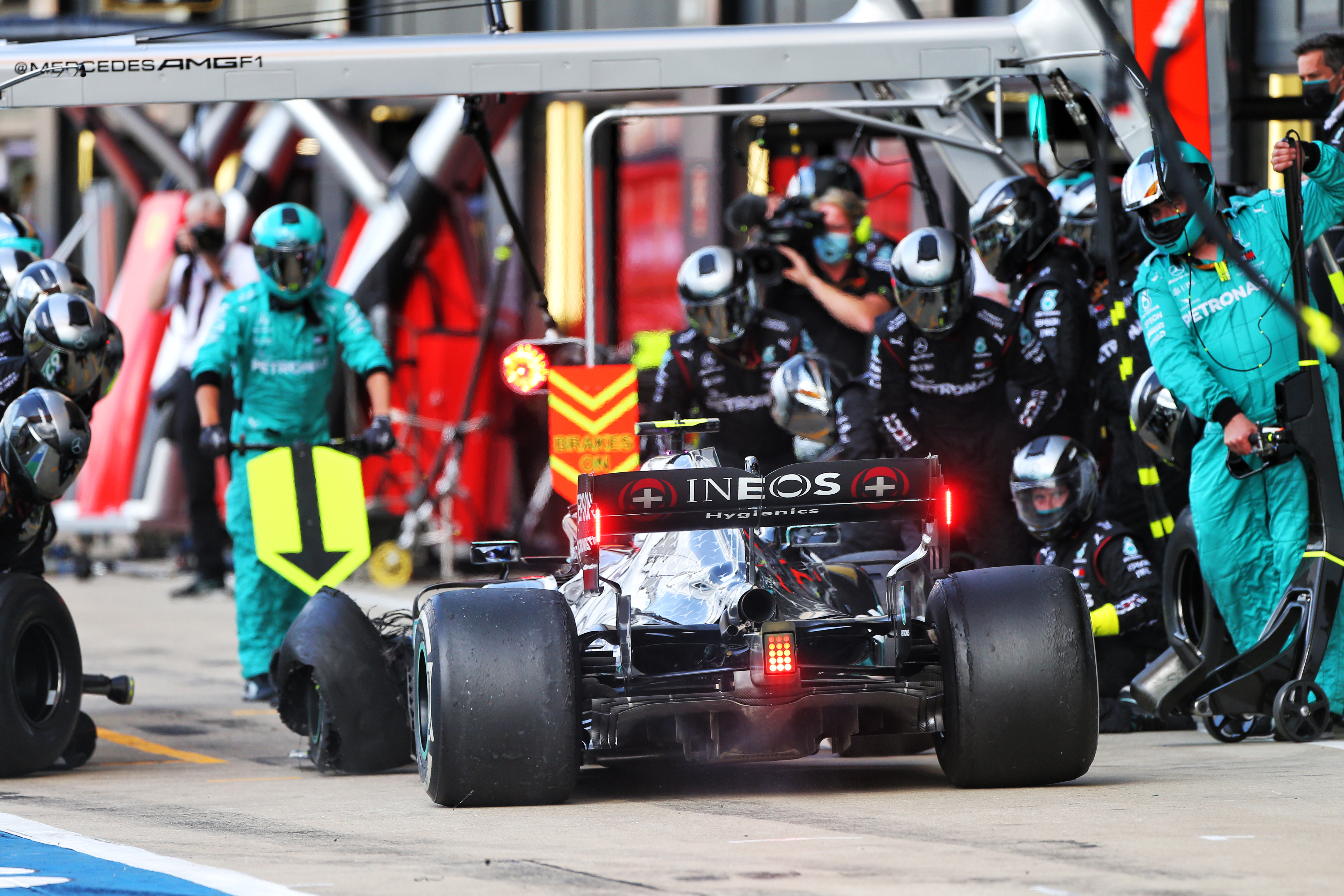
Bottas’ tyre was the first to deflate, two laps from the end, on his way down to Village (ie, Turn 3, with most of the lap to limp to the pits). He’d been feeling a vibration for a while but didn’t realise he was anywhere near a crisis point until it deflated.
Red Bull had been planning on bringing Verstappen in at the end of this lap for a free stop, so he could make an assault on the race’s fastest lap on fresh tyres – and it was also concerned about Max’s left-front.
It decided to stay with that plan. After all, second place was now safe and if Bottas’ tyre had gone, maybe Max’s would have too. Had it not done that, it could quite possibly have won the race. For Hamilton’s tyre blew on the last lap as he went down Wellington Straight. As it was, Verstappen failed to catch him on the line by 5s.
In between the two Mercedes blow-outs, Sainz suffered one too, losing him what would have been fourth place.
So Hamilton won his seventh British Grand Prix on three inflated tyres, dust and sparks trailing in his wake, the new-tyred Verstappen closing at a rate of knots.
If only there’d been a crowd there to see it all. One can only imagine how that would have sounded and felt.
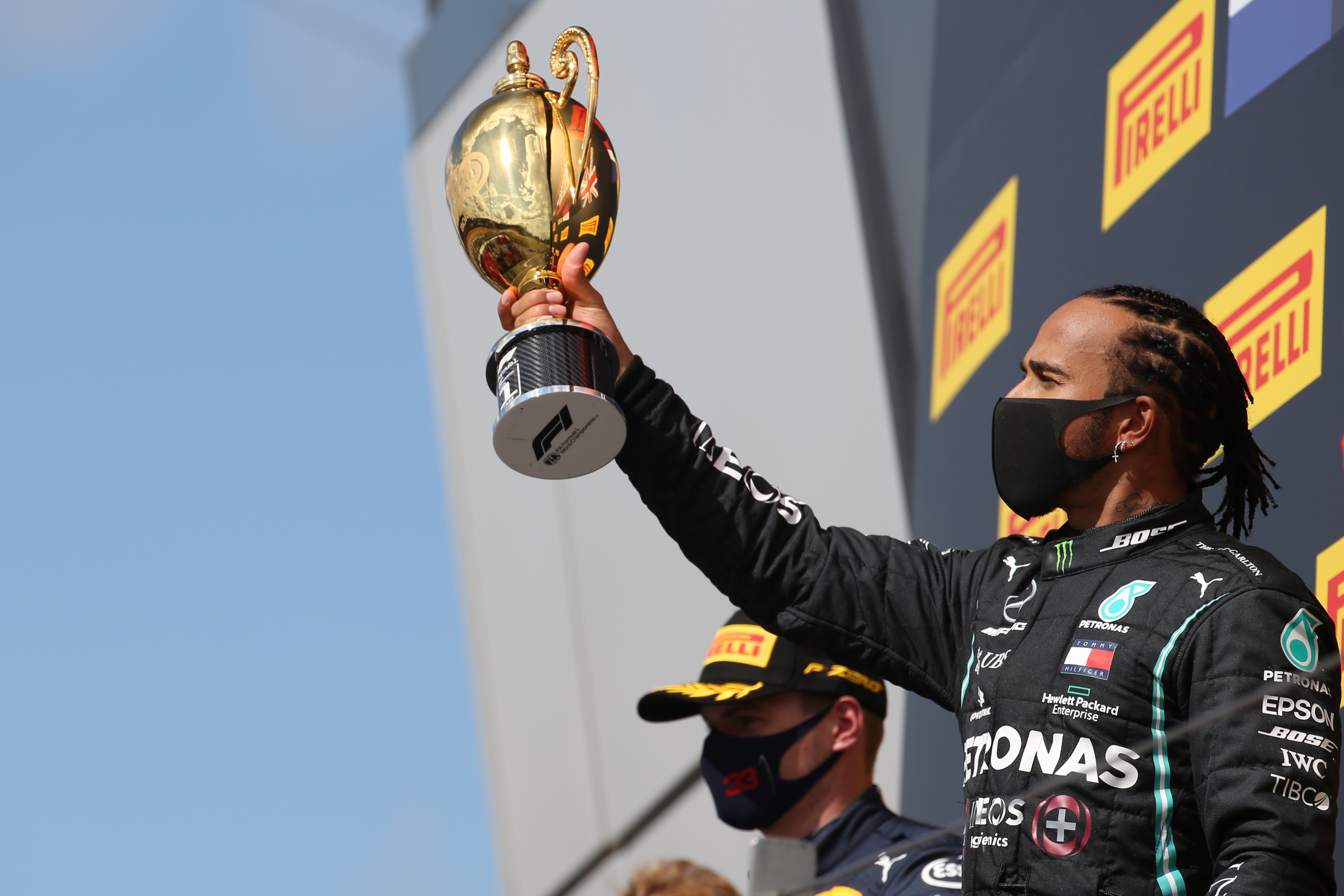
But in between Kvyat’s crash and the tyre blow-outs, the Mercedes pulled well away from Verstappen, all of them managing their pace so as to keep on the faster one-stop strategy.
Verstappen in turn pulled even further clear of Charles Leclerc’s low-downforce Ferrari. The lesser loads imposed by that aero set up (which was favoured only because of the car’s power shortfall) perhaps saved the Ferrari from stressing its tyres, allowing Leclerc to grab another unlikely podium.
In the straight running of the race, Leclerc would have been lapped. Instead, helped by the chasing McLarens’ struggle to keep their left-fronts in shape, he had a lonely but fruitful run. The foundation of which was his quite amazing qualifying performance in getting the Ferrari through Q2 on mediums and then delivering a spectacular Q3 lap that put him fourth on the grid.
“My confidence level is quite low at the moment, because I’m struggling to get a feel for the car and every time I try and push, I lose the car” :: Sebastian Vettel
He’d had a nice first few corners racing Verstappen as the Mercedes headed off into the distance. But thereafter he just monitored the gap to Sainz and drove accordingly.
The cars behind the Ferrari – Sainz, Daniel Ricciardo’s Renault, Norris – were on softs and initially faster. But the softs soon surrendered their pace and their subsequent race-long squabble and tyre monitoring kept them off Leclerc’s back.
Lance Stroll’s medium-tyred Racing Point was in this group too but had a low-key race. The sister car of the Perez-subbing Nico Hulkenberg refused to start up in the garage.
Behind the McLaren/Renault/Stroll group ran Sebastian Vettel’s Ferrari.
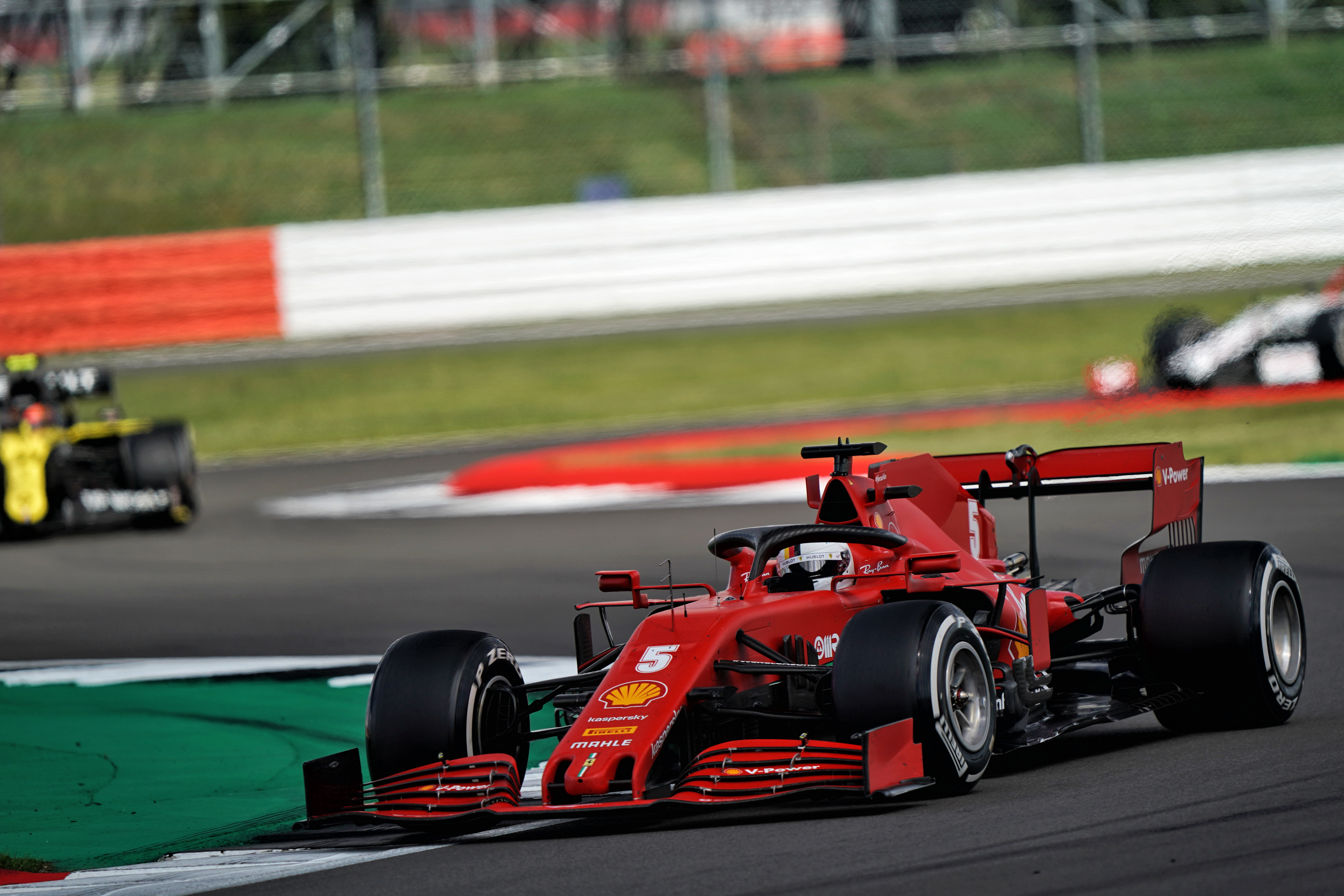
Seb, as usual, was struggling a little around Silverstone’s sweeps and lost out in battle to Esteban Ocon’s Renault, Pierre Gasly’s Alpha Tauri and Albon’s recovering Red Bull to take a quiet 10th.
“My confidence level is quite low at the moment,” he said, “because I’m struggling to get a feel for the car and every time I try and push, I lose the car. I think we need to have a look at this problem together with the engineers.”
Sainz’s late puncture promoted Ricciardo – again showing fantastic late race pace, having managed the tyres perfectly – to fourth after a last lap pass into Stowe on race-long nemesis Norris. Ocon and a starring Gasly had both passed the late-fading Stroll to take sixth and seventh respectively, as did the recovering Albon.
Kvyat had been running behind the Vettel/Ocon/Gasly group when he was instructed to make a switch ‘fail’ change on the 12th lap. He was distracted enough to catch a kerb at exactly the wrong place into the 190mph Maggots-Becketts sequence, possibly puncturing a rear tyre. The Alpha Tauri was flicked at horribly high speed into the barriers, bringing out the safety car.
The timing was fateful. It was far enough into the race to bring everyone in for an early stop onto the hard, but early enough to put a huge strain on that left-front.
And that was the race’s structure. Not the first tyre spectacle Silverstone has produced in recent years, but ultimately maybe the most dramatic, the leader’s flat left-front misshapen and sometimes failing to rotate, the car drooping at an angle.
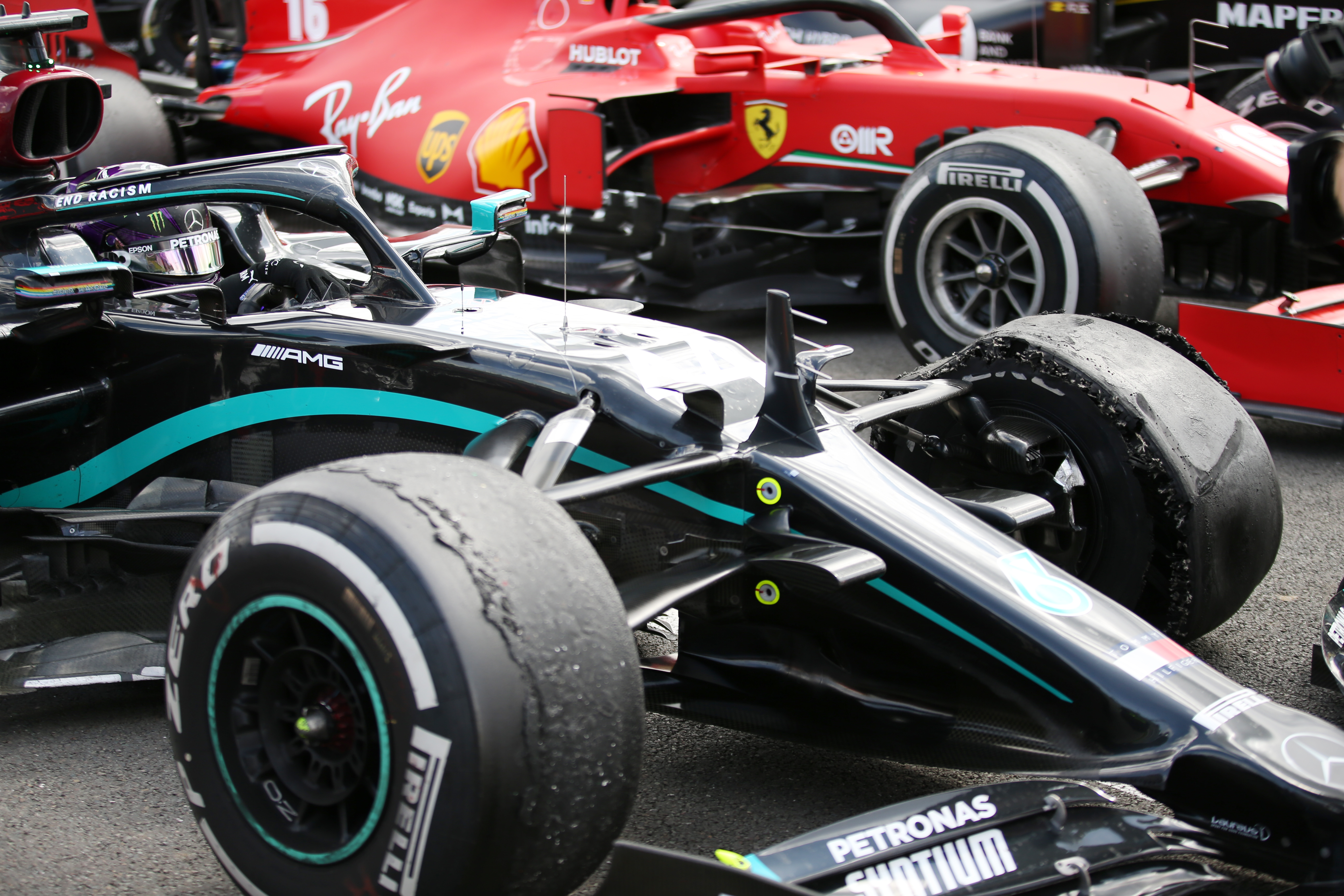
“I’ve never experienced anything like that before,” said now seven-time Silverstone victor Hamilton. “That last lap was one of the most challenging I have ever had.
“I got to Turn 15 [Stowe] and that’s where it really was a bit of a struggle and Bono [engineer Peter Bonnington] was telling me the gap, coming down from 19s to 10s and I remember giving it full gas from 15 [Stowe] to 16 [Vale] and the thing wasn’t stopping, so I got to the corner with a lot of understeer and then I heard him go, ‘nine, eight, seven’ and I was like, ‘just get back on the power and try to get the thing to turn.’
“Up until that point, everything was going relatively smoothly, the tyres felt great and I was doing some management.
“Valtteri was really pushing incredibly hard. I was doing some management of that tyre; he looked like he wasn’t doing any. When I heard Valtteri’s tyre had gone, I looked at mine and everything seemed fine, but I started to back off.
“Then, it just suddenly deflated down the straight. It was a heart-in-your-mouth feeling and then I was just trying to keep the speed up without damaging the car.
“The gap was 30 seconds at one stage, but it was coming down quite quickly and I was thinking ‘How far is it to the end of the lap?’. But we managed to get the car across the line.”
There was a one-lap window after Bottas’ deflation where Mercedes could have pitted Hamilton for new tyres. But with every indication that Hamilton had been giving his tyres an easier time (he was keeping much more in hand through Abbey, in particular) in clean air, it didn’t think it worth the risk. Its earlier margin allowed them the luxury of that mistake.

Did Verstappen rue that race-losing stop?
“Nah, not at all,” he laughed. “It was lucky and unlucky.
“Mercedes were just too quick for us. The tyres at one point didn’t look great, with 10 laps to go, so I was already on the radio saying, ‘guys, you know, the left-front doesn’t look very pretty.’ I was going to back right out of it, then they brought me in.
“Maybe we would have won or maybe our tyre would have gone. I don’t regret anything. Happy to be second when normally it would have been third.”






